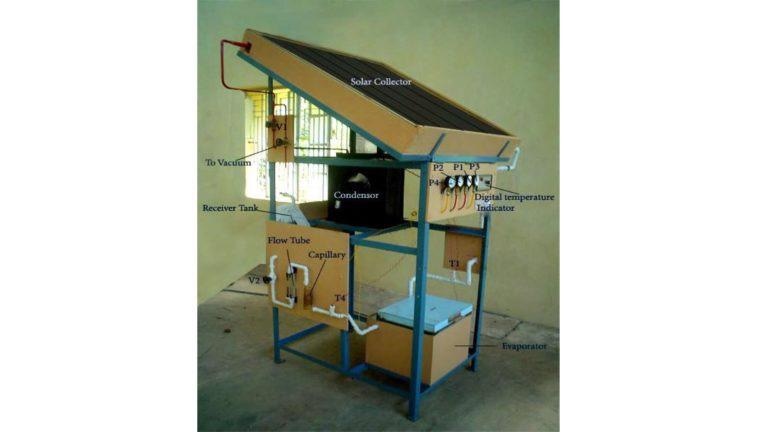Solar-powered adsorption cooling systems (SACS) have garnered attention as a renewable energy technology that could offer clean electricity for air conditioning and refrigeration while gradually lowering electric grid demand. However, these systems are inefficient in terms of energy use.
 Solar powered adsorption cooling system image. Image Credit: Saravanan Namasivayam and Edwin Mohan.
Solar powered adsorption cooling system image. Image Credit: Saravanan Namasivayam and Edwin Mohan.
Scientists from Anna University in India produced an optimizer tool to design, analyze and maximize the effectiveness of several types of SACS under various operating scenarios. The program was written in Visual Basic, a simple programming language that allows for quick application development. The study was published in the Journal of Renewable and Sustainable Energy by AIP Publishing.
Our user-friendly optimizer is a multifunctional tool capable of designing and analyzing a complete solar powered adsorption refrigeration system. Our tool is capable of assessing different combinations of operational parameters to determine the settings that maximize system performance.
Edwin Mohan, Study Co-Author, Anna University
A sorption bed, condenser, liquid storage tank, expansion valve and evaporator make up SACS, which converts solar energy into heat. During the night, the evaporator vaporizes water or some other refrigerant.
During the day, heat from the sun forces the vapor to pass into the condenser, where it is re-liquefied and stored heat is released. The liquid finally makes its way back to the evaporator to begin the process all over again.
The bonding of materials used in the adsorption mechanism, in which atoms or molecules of a substance (the adsorbate) comply to the surface of a porous material (the adsorbent), such as activated carbon and zeolite, to maximize the surface-to-volume ratio, is among the most important components of SACS.
The researcher employed their computational method to examine two adsorbent/adsorbate couples in their experiment: activated carbon and methanol, and zeolite and water. The tests lasted four days and were conducted in a prototype SACS with a cooling capacity of 0.25 kW. The activated carbon-methanol mixture had a greater efficiency, while the zeolite-water adsorption system could operate at full temperatures, according to the researchers.
The material mass concentration ratios were anticipated by the optimizer tool. The technique evaluated the cooling load, estimated maximum performance and analyzed the cooling system’s overall performance.
The researchers stated their optimizer tool might be extended to higher capacity systems, despite the fact that the study concentrated on residential house cooling systems.
Journal Reference:
Saravanan, N., et al. (2022) Optimization and experimental analysis of a solar powered adsorption refrigeration system using selective adsorbent/adsorbate pairs featured. Journal of Renewable and Sustainable Energy. doi.org/10.1063/5.0076645.